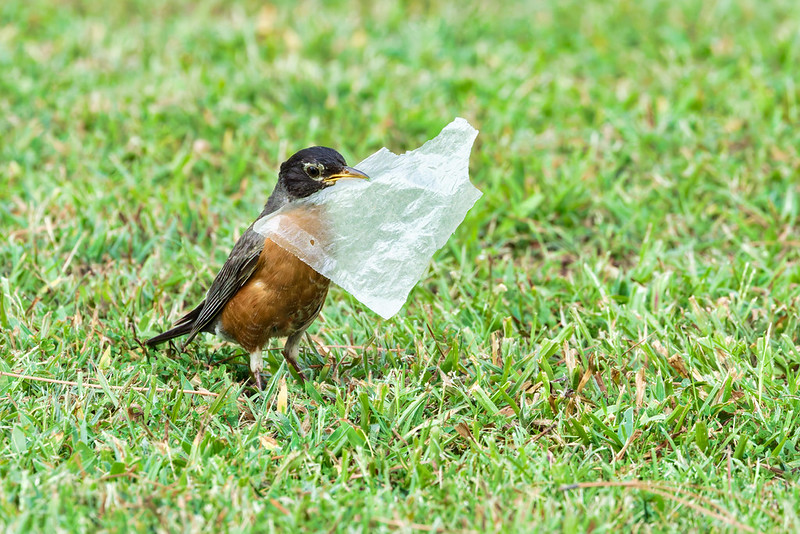In my Arkansas yard, I recently spotted an American Robin carrying an unusual nesting material: a large piece of discarded plastic. Normally, robins gather grass, twigs, and mud to build their nests. However, this robin had adapted to the human-altered environment, integrating litter into its home construction.

How American Robins Build Their Nests
American Robins are skilled architects. They typically weave grasses and twigs together, using mud as a sturdy binder. The female does most of the construction, shaping the nest into a strong, cup-like structure. In natural settings, these nests are a testament to the bird’s craftsmanship and resourcefulness.
Plastic Pollution and Bird Nesting
Plastic pollution is altering the way many bird species, including robins, gather materials. While this adaptation shows resilience, it also highlights a growing environmental issue. Plastic in nests can trap or injure chicks, and over time, it breaks down into harmful microplastics. Studies show that urban and suburban birds often incorporate synthetic materials simply because they are abundant in their habitats.
What We Can Do to Help
We can reduce plastic in bird habitats by properly disposing of waste and participating in local clean-up events. Removing litter from yards, parks, and nature trails ensures that birds like the American Robin can find safe, natural materials for their homes.
A Close-to-Home Reminder
Watching this robin dash between foraging and nest building was a vivid reminder that our daily habits ripple into wildlife behavior. Even a small piece of trash can end up woven into the lives of the creatures around us.
Takeaway: Protecting wildlife starts with keeping their world clean. The next time you see a bird at work, consider what materials are available in your neighborhood and how you can make them safer.
